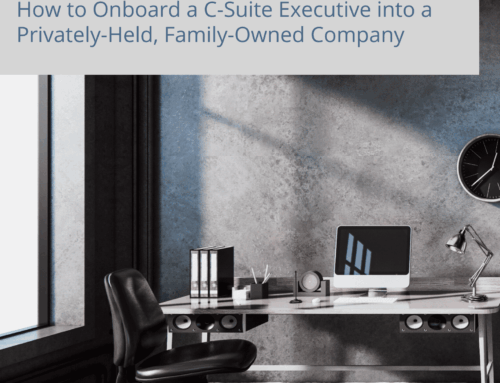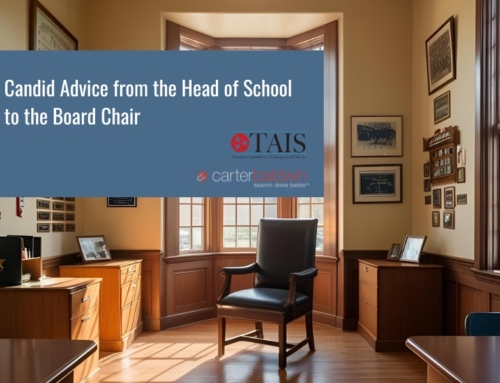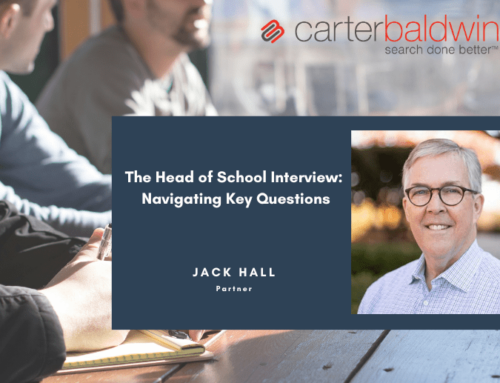Even as I write the title, I know that it is audacious. Nobody could so precisely synthesize the unending responsibilities of a CEO into a single most important role. But we believe there is one …
A simple search of the internet indicates that this is not the first time someone has attempted to crystalize the most important role(s) of a CEO. Most identify groups of 3-6. A few have identified a “single most important role,” but even these conflict. Had any leadership writers landed in the general place to which this article will lead us, I would not be writing.
I do believe that there is a single most important role. I believe it can be identified and that there is significant lift in running an organization around this central idea. Before we name it, consider what others have proffered as the most important role(s) –
Some reasonably assert that the CEO’s primary focus should revolve around developing and championing the organization’s strategy. Strategy is a key differentiator and can disrupt markets, focus investments and teams and fuel success. Strategy sat atop the CEO platform of responsibilities until famed management guru Peter Drucker famously quipped “Culture Eats Strategy for Breakfast.” Quickly many other thought leaders, jumped on the bandwagon, identifying culture as the primary critical role of a CEO.
Another group posits that the CEO must set and evangelize the vision necessary for an organization to succeed – rallying the team around it as she/he authentically lives it out and “owns” it.
Others identify shareholder value or market capitalization as the single most important roles. Like strategy and culture, vision and enterprise value are key domains for the CEO but they too are dependent upon another “single most important role” if they are to succeed.
In his classic leadership book “Good to Great”, Jim Collins led us through a number of now famous business analogies that illuminated the path of “Good to Great” organizations. These included the flywheel, the hedgehog principal, Level Five leaders and having “the right people on the bus.” What makes Collins’ work so monumental is that it is both intuitively simple and yet well researched and brilliantly presented. Our team at CarterBaldwin spend their lives helping organizations get the right people on the bus. Collins went further though, reminding us that they must also be in the right seats on the bus. This principle undergirds my supposition that there is a “most important CEO role.”
Using Collins’ analogy, it seems that no seat on the bus is more important than the driver’s seat … where the CEO sits. While some would say finding, hiring and retaining the right CEO falls to the Board of Directors and/or Shareholders, it is also the primary job of the CEO. In short, the single most important role of a CEO is to make absolutely certain that the right CEO is running the company and then do what is necessary to encourage that CEO’s effectiveness over the long haul. Strategy, vision, culture, shareholder value … all crucial and all within the scope of the CEO’s role … I suggest these are maximized when the CEO is constantly looking inward and in the mirror and can authentically answer “yes” to the question of whether or not “I” am the right CEO for the organization. On the flip-side, If the answer is not a resounding “yes”, then strategy, vision, culture and shareholder value will be undermined.
As a CEO works to determine if his or her organization has the right leader in the driver’s seat, there are only two possible conclusions – The organization has the wrong CEO or the right CEO leading it.
Let’s presume for just a minute that I step back (which I have actually done) to determine whether or not the company that I am leading has the right CEO leading it. Let’s presume (as I actually have) that I determine that my company would actually be better run with a different leader…that the organization is not best-served by my leadership. What options are available to a CEO who determines that the wrong person is in their organization’s driver’s seat? There are three…
- Executive Development – The CEO, with the help of a board or a subcommittee of the board, and perhaps some outside advisors, can identify the weaknesses that challenge the CEO’s leadership competency. In listing those weaknesses and their internal and/or external ramifications, a development plan can be put in place to increase the CEO’s competency in areas of weakness, measure results and return the CEO to a level of confidence that the right person is driving the bus.
- Change the CEO’s role – When we do an executive search for a CEO there are only so many variables that shape the board’s consideration of the candidates that we target. Will they be primarily external dealing with customers, prospects and the investment community OR will they be primarily internal, focused on operational and infrastructure requirements. Jim Collins’ leads us to ask “should the CEO be Level Four or Level Five”? – Driving the organization forward with a strong personal magnetism and an energized extroversion OR leading the organization through a team of well-equipped and supported subordinates? No matter the answers, the fact that these questions are raised imply that very different roles and competencies can be reasonably aligned with the CEO role.
It is important to note that the role of the CEO should never be changed for the benefit of the CEO – to make her job easier or to allow them to stay when they really should leave. But if the organization would truly benefit from a recasting of the CEO role, then they and the board should systematically do so. Gino Wickman and Mark C. Winters in their wonderful book “Rocket Fuel,” show us the lift that occurs when a CEO who is weak on organizational execution can hire an internal “integrator” (a COO perhaps) to fill the CEO’s management gaps – those are reasonable accommodations if they can be shown to be in the best interest of the organization. The idea is that an organization can truly benefit from a leader who allows herself/himself to capitalize on personal strengths and hire to offset personal weaknesses. - Replace the CEO – There are an endless number of meanings that have been attached to the term “Servant Leadership”, but the one that I think is the most accurate is when a leader subordinates their personal or career gain for the good of the enterprise. Much easier said than done – and yet done frequently enough to have provided the author with numerous examples. A CEO who concludes that the organization is better served by another CEO and then works to help identify, attract and hire a replacement, personifies great leadership…and generally to the benefit of the incumbent/departing CEO.
Now, on the other hand, what happens if, with independent perspective and contrary to the above, the CEO determines that the organization is being led by the right person in the right seat on the bus? Does a CEO then have specific responsibilities to ensure that she/he is nurtured and strengthened in their capacity as the organization’s leader? The answer is a resounding yes. If an organization has the right CEO leading it, that CEO has primary responsibility to ascertain their own beneficial continuance in that role. Every day, good CEOs’ go to work believing that they have a responsibility to inspire and retain key people who are on the right seats on the bus. If that is commendable and key (it is), then the CEO also must also shoulder the responsibility of inspiring and retaining himself/herself. Boards have a role in this process and must feel ownership for it, but a great CEO will not abdicate the responsibility for self-retention.
Practically, this means two things – the CEO must provide herself/himself the time and access to whatever is necessary for them to maintain a high level of passion for the enterprise. This includes exposure to ideas, forums and people that will regularly refuel the CEOs inspiration for leadership. Moreover, for the benefit of the organization alone, the CEO has an obligation to ensure that they are receiving the proper “care & feeding” necessary (necessary is the key criteria here) to retain his or her leadership of the organization. Whereas a CEO may give subordinates a spot bonus, a first-class upgrade, an extra day of vacation, a corner office or an increased car allowance in order to show appreciation and build commitment – always for the benefit of the organization, he or she must also often do what is necessary to retain themselves.
In the practical application of this there are two lines that can never be crossed – and they are not easily defined. The CEO must never violate policy or ethical protocol in retaining himself or herself. Additionally, the CEO must always act in the best interest of the organization and see himself/herself as a key part of the organization worthy of retention but never be held hostage to ego driven demands or personal rewards. A fluid, very open dialogue and accountability to the board is a key “control” in this area.
Recently, I interviewed a CEO who was ready to leave an organization that he had served very well. His job required him to fly multiple times weekly and company policy required economy class seating. The fatigue and resentment over this single issue had built to a point where it was affecting his work (avoiding trips that would be beneficial to the organization) and his job satisfaction. He shared with me that the board had set the policy and that he felt powerless to over-ride it. I suggested that his departure would create far greater impact than the difference in air fares. I believe this CEO had complete and total responsibility to not let this single factor prevent his retention with the company and addressing it with his board was part of his stewardship responsibility to the enterprise.
Shakespeare notably wrote in Hamlet “to thine own self be true.” Strategy, culture, vision and shareholder value are all key responsibilities of a CEO. These are optimized, though, by the right CEO. When an organization has the right CEO, retaining that person in the role is essential for continued organizational prosperity. What could be a more foundational role for the CEO than to insure that they are retained and properly equipped? This requires a special person at the helm indeed as greed, personal gain or selfish motives can subordinate the higher calling I am pointing to here. Done correctly, with a true focus on enterprise vs. CEO value all the other roles of the CEO are optimized when the CEO keeps themselves properly healthy, fed and engaged. I wouldn’t get on a bus if I knew its driver was not all of those things.





